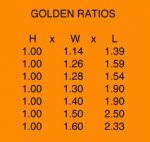MagashMusic
New member
Are you doing measurements with or without the sub?
Also, are you doing measurements at the mix position or somewhere else?
And...are you measuring one side/speaker at a time or both together?
The other thing...as I said earlier...did you consider moving your speaker toward/ and even up against the front wall...along with moving your mix position.
You appear to be sitting in the center of a small room...not really good. I know some common wisdom is to have the speakers as far away from the front wall as possible...but that would really apply IF you have the big enough space. The other options is to move them right up against that front wall, and you may see some of your nodes disappear. You have to try a variety of positions for the speakers and your mixing position...along with moving the trapping to different areas of the room and measuring.
You also have to measure the same way, the same level every tine. Have you calibrated you measurement level and speaker loudness for a single reference level?
I'm doing the measurements with the sub and in the mix position. One side at a time and both speakers together, no difference. Tried moving the sub and moving the speakers towards the walls, fixed the nodes but made the modes worse...
Would hire a professional acoustician but I live in a small town in Croatia, no such thing here...
Starting to feel a bit desperate...






